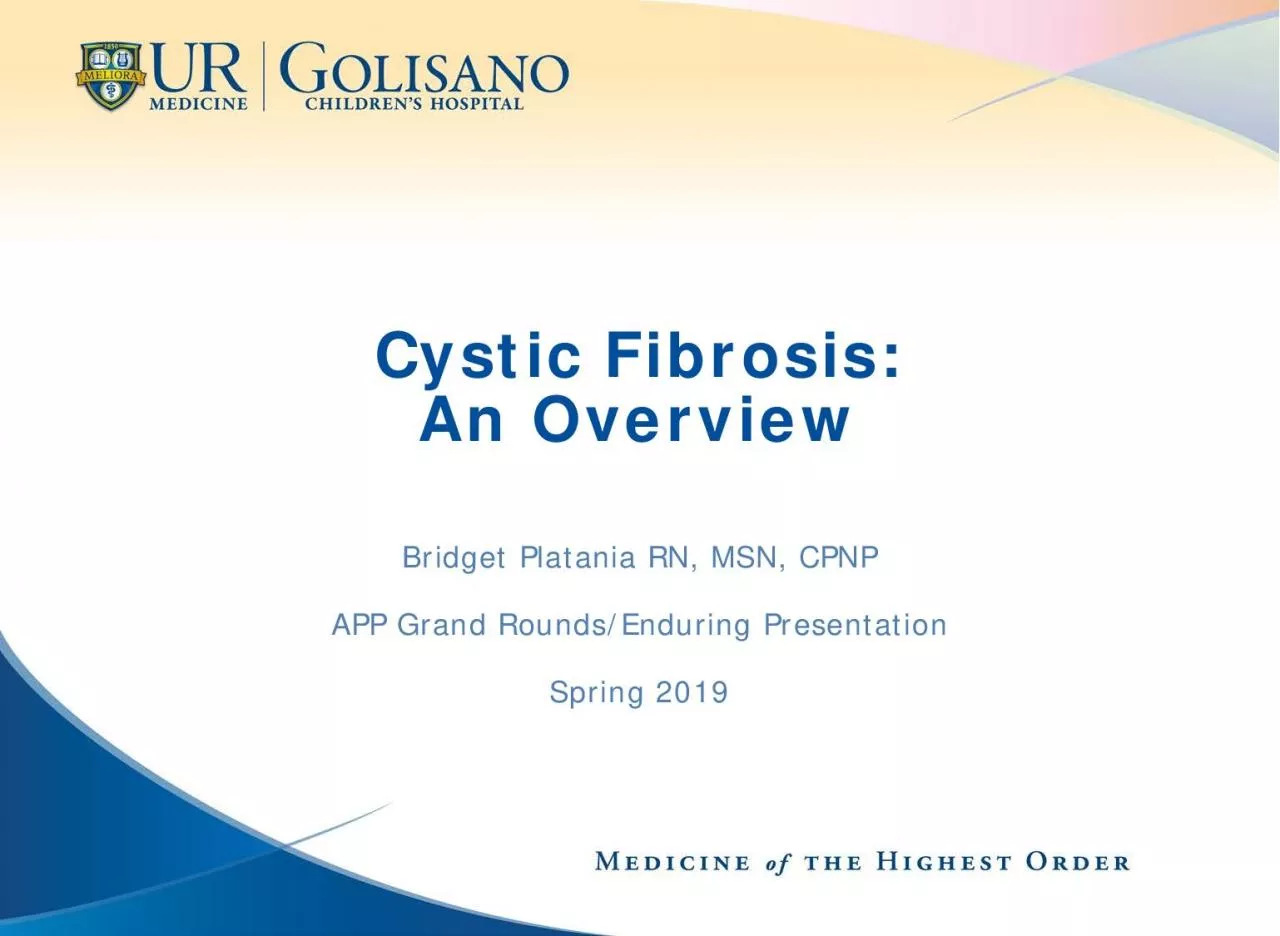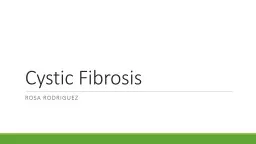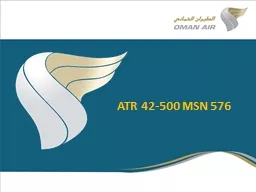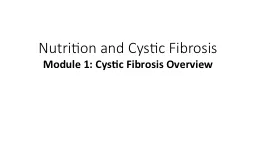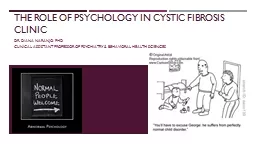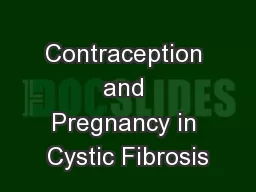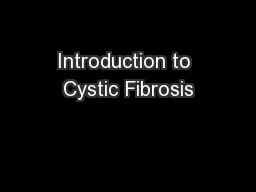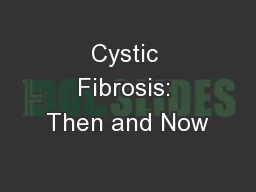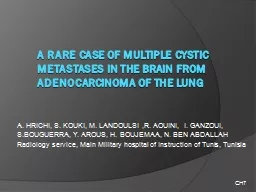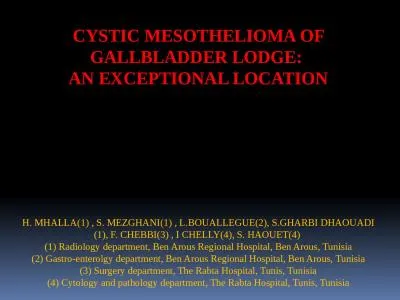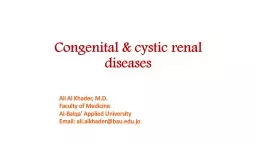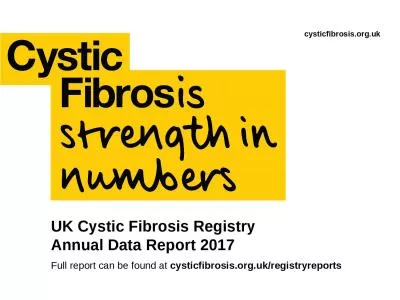PDF-Cystic FibrosisAn OverviewBridget Platania RN MSN CPNPAPP Grand Rou
Author : hadley | Published Date : 2022-08-26
ObjectivesUnderstand the genetic abnormality causing cystic fibrosis CF and the newborn screen processRecognize the multiple organ systems affected by CFIdentify
Presentation Embed Code
Download Presentation
Download Presentation The PPT/PDF document "Cystic FibrosisAn OverviewBridget Platan..." is the property of its rightful owner. Permission is granted to download and print the materials on this website for personal, non-commercial use only, and to display it on your personal computer provided you do not modify the materials and that you retain all copyright notices contained in the materials. By downloading content from our website, you accept the terms of this agreement.
Cystic FibrosisAn OverviewBridget Platania RN MSN CPNPAPP Grand Rou: Transcript
Download Rules Of Document
"Cystic FibrosisAn OverviewBridget Platania RN MSN CPNPAPP Grand Rou"The content belongs to its owner. You may download and print it for personal use, without modification, and keep all copyright notices. By downloading, you agree to these terms.
Related Documents

